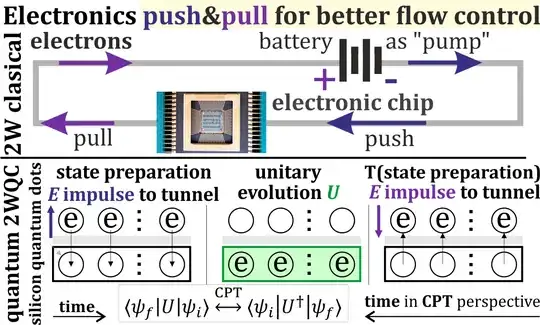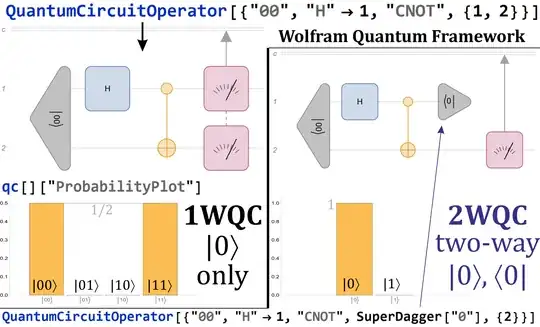So here is your Question: Could more symmetric quantum computers be built by implementing time/CPT symmetry through two-way control similar to classical electronics' push and pull of electrons?
Answer:The concept of two-way control in quantum electronics, akin to the push and pull of electrons in classical electronics, is an interesting one. In classical electronics, fields are employed to manipulate electron flow, a fundamental mechanism underpinning the function of devices like transistors. Extending this analogy to quantum electronics, such as silicon quantum dots used in quantum computing, could potentially allow for more symmetric processes with respect to time or CPT (charge, parity, and time) symmetry.Quantum mechanics, in theory, is time-reversible when considering unitary evolution under the Schrödinger equation.
However, practical quantum computing operations, especially measurements and state preparations, often introduce asymmetry due to the non-reversible nature of quantum measurement, which seems to collapse a quantum superposition to a definite state.The proposition of a fully reversible quantum process by, for instance, reversing the electrical impulses used for state preparation is thought-provoking.
If achievable, such control could be a breakthrough, possibly creating quantum systems with operations that can be undone.The implication that such "two-way quantum computers" (2WQC) could solve NP problems needs careful consideration. Quantum computers are promising for specific intractable classical problems but do not universally solve all NP problems efficiently—only those within the BQP complexity class.
Perfectly reversible quantum operations don’t inherently imply the ability to solve NP-complete problems in polynomial time. The feasibility of constructing such reversible systems faces several scientific and engineering challenges, such as quantum decoherence, error rates, the high precision required for control mechanisms, and the foundational aspect of measurement in quantum mechanics.In conclusion, while the idea of a 2WQC with time-reversible processes aligns with the principles of quantum mechanics, the realization of such a concept remains speculative. It embodies a compelling direction for future research that could have profound implications for quantum computing

